This week, David Tenneson of 5count4 and I take a deep dive into one of the best tournaments on the men’s college golf Spring calendar, The Amer Ari Invitational. Some of the top collegiate teams from across the country open the second half of their season in one of the best destination spots possible. Beyond just the location, what makes this event special and why is a DII program the primary host of a DI tournament? What (or who) is an Amer Ari? Join us for a stroll along Waikoloa Beach on the Big Island of Hawaii as we explore some rich college golf history.
IN THE BEGINNING
The Spring portion of the 1990-91 season began early for many of the top men’s collegiate golf teams in the country, but nobody was complaining about spending January on the Big Island of Hawaii. In the previous couple of years TaylorMade had spun up a collegiate program which committed a fair bit of money sponsoring some collegiate tournaments including the Red River Classic (co-hosted by Texas and Oklahoma). In 1990, Hawaiian newspapers announced a new tournament sponsored by TaylorMade that would be co-hosted by two of the branch campuses of the University of Hawaii system: the D1 Manoa campus (generally just referred to as “Hawaii”) and the D2 Hilo campus (known as “UH-Hilo”). With a D1 school as a co-host, other D1 programs were able to count this as an official event. Thus the “TaylorMade Big Island Intercollegiate” was inaugurated in January 1991 and attracted some of the highest ranking teams in the country right from the start.
EXPLORING THE HISTORY
Since the first playing in 1991, this tournament has gone by many names which included some combination of “TaylorMade”, “Big Island”, and/or “Waikoloa Beach” which was the host course from 1991-2008. In 2009, the tournament was renamed the Amer Ari in honor of a longtime supporter of the UH-Hilo program - Mr. Amer Ari - whose son, Zady, had just just graduated from playing on the UH-Hilo team. The name stuck, but the course changed a few times, going from Waikoloa Beach Resort (91-08) to Mauna Lani (09-10), back to Waikoloa Beach (11-20), and now permanently (probably) at Mauna Lani.
There have been two constants over the last 30+ years: unbelievable (but not unpredictable) wind and Coach Earl Tamiya. The UH-Hilo coach has become something of a living legend since taking over the men’s program and this tournament in 1992. In that time, Coach Tamiya has seen many of the top collegiate players brave the Hawaiian wind before becoming household names playing on the PGA Tour. Many of those players haven’t forgotten about the Coach Tamiya - all it takes is one conversation to understand why - and there are some great stories about players taking time to speak with him again, such as the time Matt Kuchar spotted Coach outside the ropes early in his pro career in 2001 at the Sony Open.
We’ll dive into some of the history below and the data in another post, but just take a look at the (co-)medalists over the years and you’ll get a sense of how historically significant this event truly is in the world of college golf.
FUTURE COACHES AND BIG TIME PLAYERS
Some of those players Coach Tamiya has seen play in his tournament have returned as coaches themselves. In fact, this event may be in the running for having the most people who have both played and coached in this same regular-season tournament. The very first playing in 1991 included Jean-Paul Hebert (playing for Texas, now coaching UNLV), Bowen Sargent (NC State alum and long-time Virginia head coach), Derek Freeman (Oklahoma Sooner who coached UCLA to an NCAA team title in 2007), and Jack O’Keefe (Arkansas alum who was for a time the Director of Golf at Augusta). What is the predominant memory from that event? The wind, of course, and brutally high scores.
There are too many coaches to properly highlight them all here but some others who also played in this event include: Glen Millican, Ryan Donovan, Bill McDonald, Casey Martin, Chris Zambri, Ryan Murphy, Tim Mickelson, Greg Robertson, Josh Gregory, David Inglis, Michael Beard. Alan Bratton, who has coached his Oklahoma State Cowboys to four tournament titles since 2014, earned his first career victory here in 1992 while playing for Oklahoma State.
Other big time collegiate (and often future-pro) players who teed it up in this event not already seen/mentioned above include: Ludvig Aberg, Paul Casey, Joel Dahmen, Jim Furyk, Viktor Hovland, Brooks Koepka, Justin Leonard, Jamie Lovemark, Bob May, Maverick McNealy, Ryan Moore, Jon Rahm, Patrick Rodgers, Adam Scott, Sahith Theegala, Peter Uihlein, and Gary Woodland.
The 1995 Tiger Playoff
This year marks the 30th anniversary of an epic Amer Ari where Tiger Woods did something he didn’t often do: lose. The superstar Stanford freshman made up a two stroke deficit in the final 18 holes to catch Arizona State sophomore Chris Hanell, but lost to a 15-foot birdie on the first sudden-death playoff hole. Oklahoma State, led by senior Alan Bratton and Trip Kuehne who both finished T4, took home the “Big Island Intercollegiate” team title and would go on to defeat Stanford a few months later for the NCAA team title in another dramatic playoff.
An Impressive List of Winners
Below is a collection of some of the notable team and individual winners over the years, archived and generously shared by Waikoloa Beach Resort Director of Golf - and former Amer Ari participant! - Kevin Ginoza.
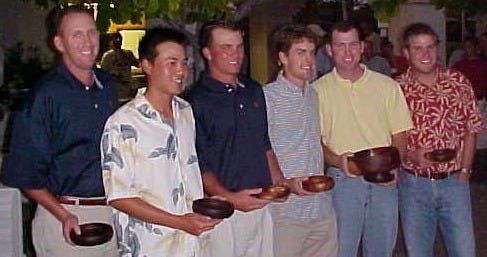
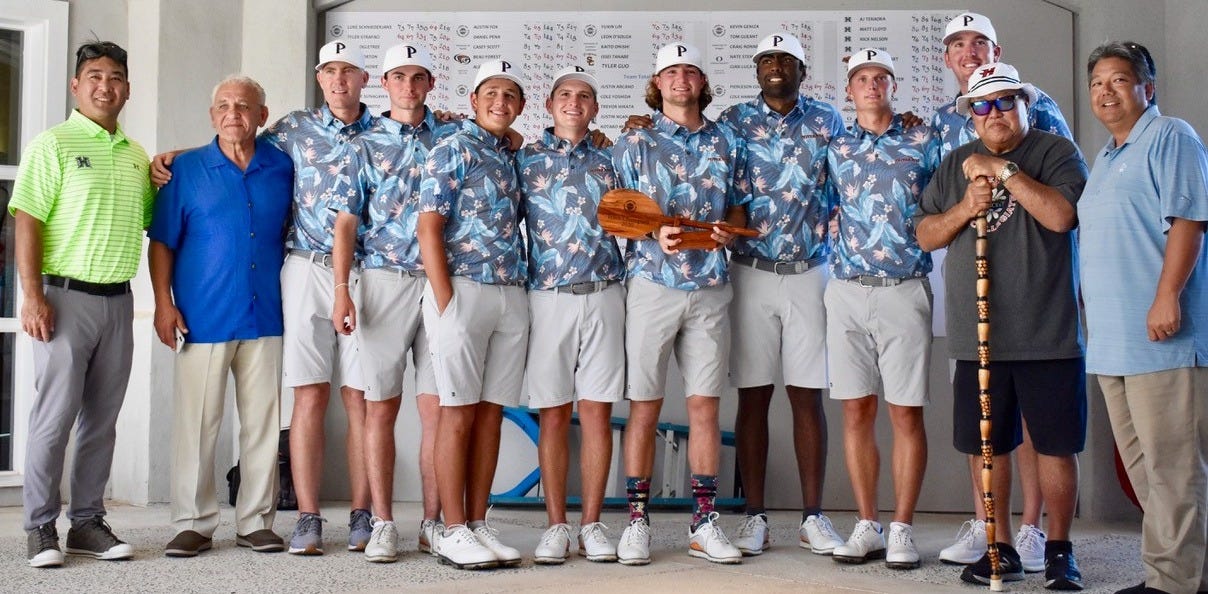
LINKS TO THE NCAA CHAMPIONSHIP
Any tournament with a field perpetually this strong is going to have a great connection to the NCAA championship. In fact, six teams - 1991 Oklahoma St, 1995 Ok St, 1998 UNLV, 2007 Stanford, 2012 Texas, and 2018 Ok St - have won the NCAA championship just a few months after taking home the Amer Ari team title. Furthermore, four players have won both Amer Ari and NCAA medalist honors in the same season: 1993 Todd Demsey [Arizona St], 2002 Troy Matteson [Georgia Tech], 2016 Aaron Wise [Oregon], and 2019 Matt Wolff [Ok St].
Since the addition of match play to decide the NCAA team championship, three Amer Ari team champs - 2018 Ok St, 2019 Ok St, and 2021 Arizona St - have gone on to earn the #1 seed at NCAAs. That’s a cool stat, but what’s even more impressive is that since that format change in 2009 **at least one team from the Amer Ari field every year has gone on to make the match play portion of NCAAs! The average number of teams each year is about 3, with the most being in 2010 when seven of the eight match play teams had competed in Hawaii a few months prior; the only team not at Amer Ari was Augusta who ended up winning the first of their two consecutive NCAA championships.
SMASHING RECORDS IN 2024
In just his second collegiate start, Arizona State freshman and 2022 U.S. Junior Amateur champion Wenyi Ding had the college golf world on the edge of its collective seat as he navigated his 54th and final hole. His closing birdie didn’t just secure his first win, it also placed him in the record books as the first player to break 190 in collegiate competition. Ding’s historic 27-under 189 (63-64-62) bettered the previously lowest-known score of 192 which was held by several players including fellow Sun Devil Jon Rahm (21-under at 2014 ASU Thunderbird). Even in a field of low scores, Ding managed an astounding 9-stroke victory - which is undoubtedly a record when both players broke 200 - and was nearly 22 strokes better than the field average at Mauna Lani’s North Course.
On the team side, UNC blitzing both the tournament and school record books. The Tar Heels opened with an incredible 26-under-par 262 on the back of David Ford’s 64 as well as 65s from his brother Maxwell and Dylan Menante. Auburn broke that single-round tournament scoring record in round 2 with a 27-under 261, led by a Jackson Koivun’s 63. In the final round, Georgia Tech tied a potential national record when their drop score came in at 5-under 67 on their way to a 265/-23 finish. In the end, UNC finished at 68-under par (796) for a five stroke victory over Arizona State.
ATTENDING ONE OF THE MOST UNIQUE COLLEGE GOLF EVENTS
The Amer Ari is a uniquely special experience for both coaches and players. A visit to the Big Island in the middle of winter is obviously a much welcomed idea for everybody. However, there are a few dynamics which make this tournament unique from a student-athlete experience perspective.
Held early in the spring semester for most schools, the tournament presents logistical challenges due to its location and the long journey across multiple time zones. As a result, many teams dedicate an entire week to the trip. With classes just beginning and academic pressures still light, administrators often grant golf programs the extended time away from campus, making it easier to fully embrace the event.
What sets the Amer Ari apart further is its exemption from the NCAA’s “days of competition” rule. For those unfamiliar, Division I teams are allowed 24 calendar days for competition annually. This includes regular-season events and the conference championship but excludes NCAA Regional or National tournaments. The Amer Ari, however, does not count against these 24 days, making it an attractive opportunity for coaches looking to maximize their team’s playing schedule.
Traditionally, the tournament is held from Thursday to Saturday, and this year is no exception. However, most teams travel the weekend before to adjust to the time difference and acclimate to the conditions.
During my time at Texas Tech, we followed the same routine each year. We’d fly in on the Saturday prior, landing in Kona and heading straight to Costco from the airport. With no major grocery stores near Waikoloa, Costco became an essential stop for stocking up on supplies to feed a team of ten for the week. It always felt like we emptied half the store each time.
We stayed in rented apartments on the Waikoloa property, and our first evening was spent organizing groceries and settling in before an early bedtime—courtesy of the time difference.
Sunday was all about the tournament course, Waikoloa King’s Course. We’d typically book the first tee time at 7 a.m., taking advantage of the quiet morning hours, the time-zone-induced early wake-ups, and the fact that these were the same tee times we’d see during the tournament. And let’s be honest—finishing by lunchtime meant we could head to the beach for some much-needed relaxation.
Monday was Nanea day. About ten teams from the Amer Ari field were usually invited to play this stunning course, perched high on the volcanic hillside of the Big Island. Tuesday brought another round at a different course; for us, it was Mauna Lani every year. By Wednesday, we were back at Waikoloa for the official practice round.
Tournament rounds began with an early shotgun start—usually at 7 a.m.—and the mornings were truly something special. Waikoloa’s practice facilities are compact, so the range and putting green were always packed at sunrise. There’s a certain magic to seeing the course come alive in those early hours.
The weather was generally predictable, at least during my years there. The wind stayed calm for about the first hour of play but gradually picked up from the north or northeast as the morning progressed. By the end of the round, it was often blowing at 20 mph. While I’ve heard tales of fierce winds at the Amer Ari, I was fortunate never to encounter anything too extreme.
Post-tournament routines at the Amer Ari were as unique as the event itself. We’d rush back to the apartment to clean and pack before heading to Kona for a final dinner on the island. Afterward, we’d make our way to the airport for an overnight flight—usually to LAX or PHX—before connecting to Lubbock. Most teams flew out that same night, adding a bittersweet end to an unforgettable week.
We hope you enjoyed getting to know more about this fantastic event! We intend to do more of these deep dives soon. Let us know what tournament you’d like to see covered and if there’s any stats or data topics you’re curious about.
Have a great week!
If you’d like to support my work further, please consider becoming a paid subscriber. In addition to supporting my writing and website work, paid subscriber get access to all of the player development tools on www.mikkelgolf.com. The tools available include a library of performance drills and on-course formats, plus an on-course stats system designed to improve approach play and putting. Five division one golf programs currently use the stats portal. Reach out for more details if you’re interested!
If you enjoy learning more college golf history, consider also subscribing to David’s newsletter


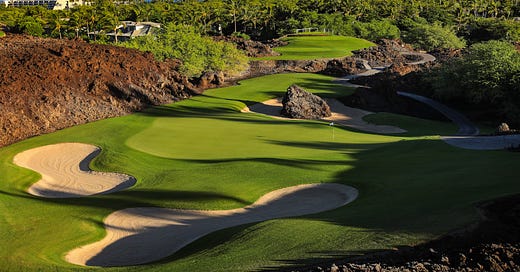




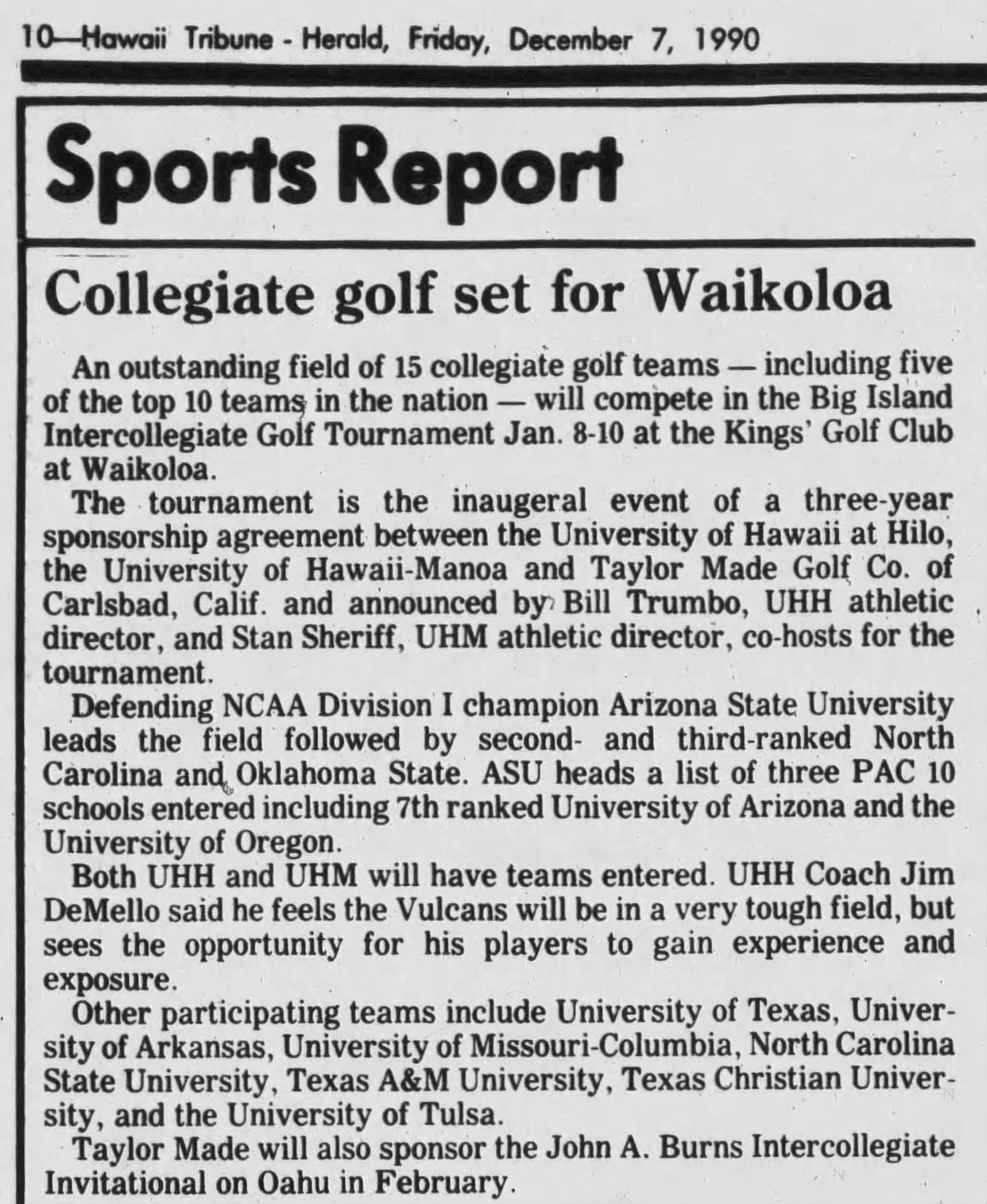
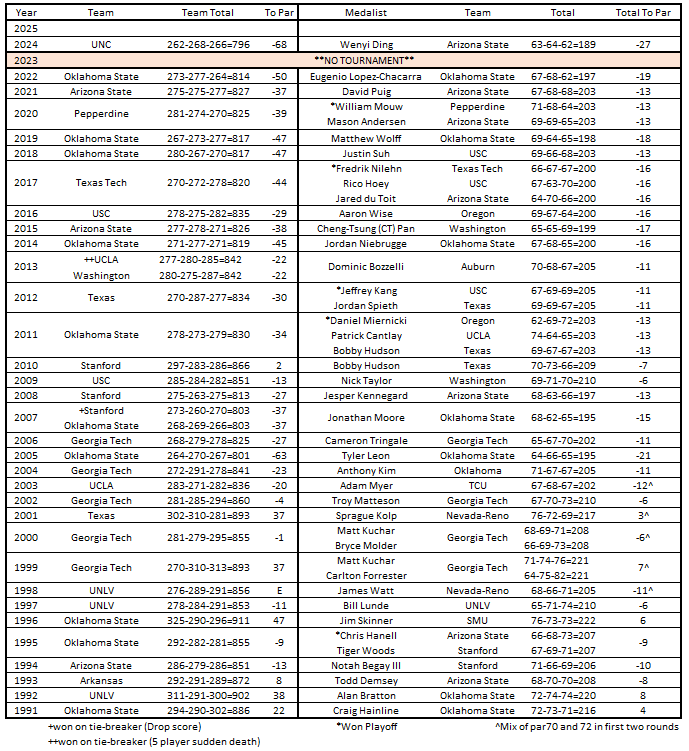
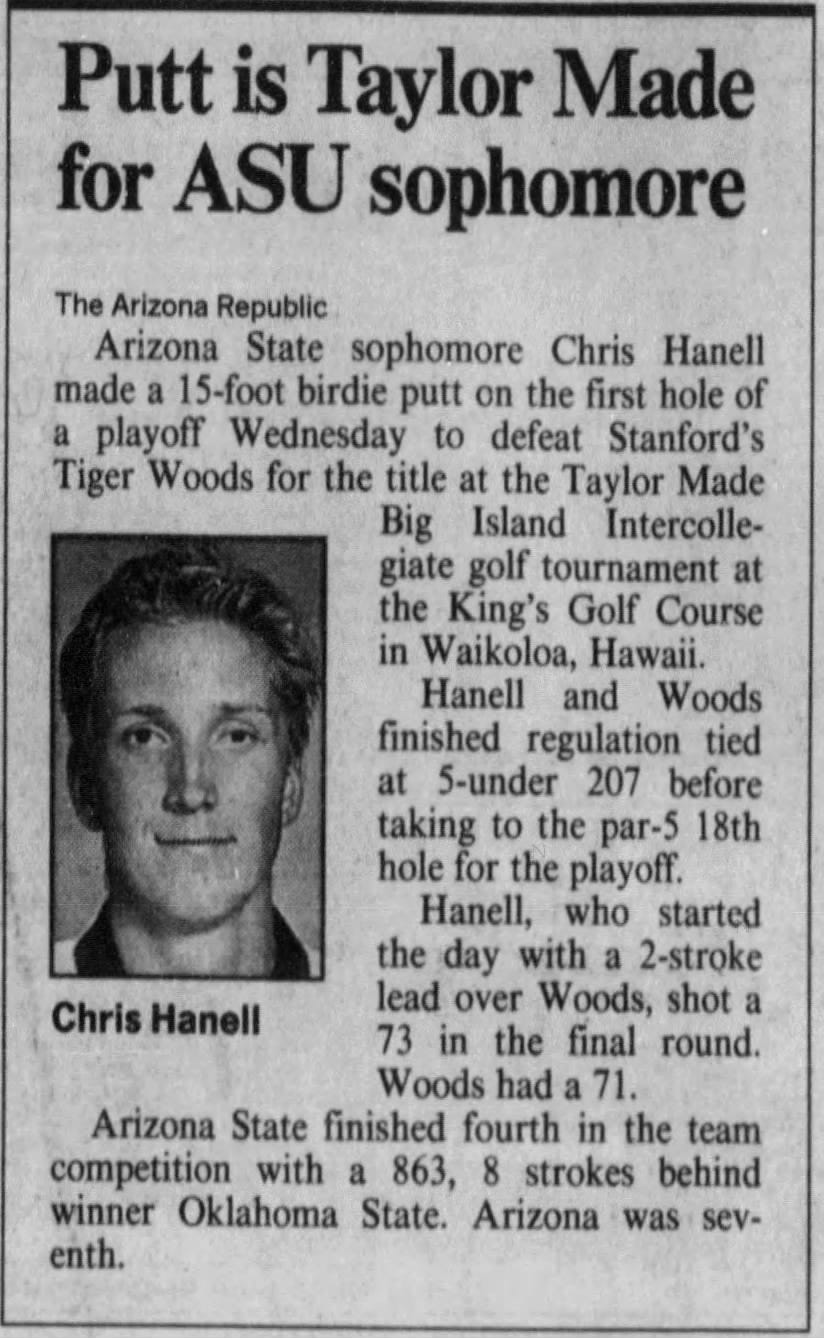
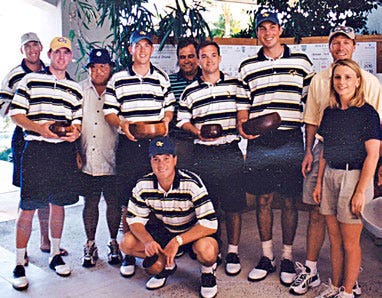
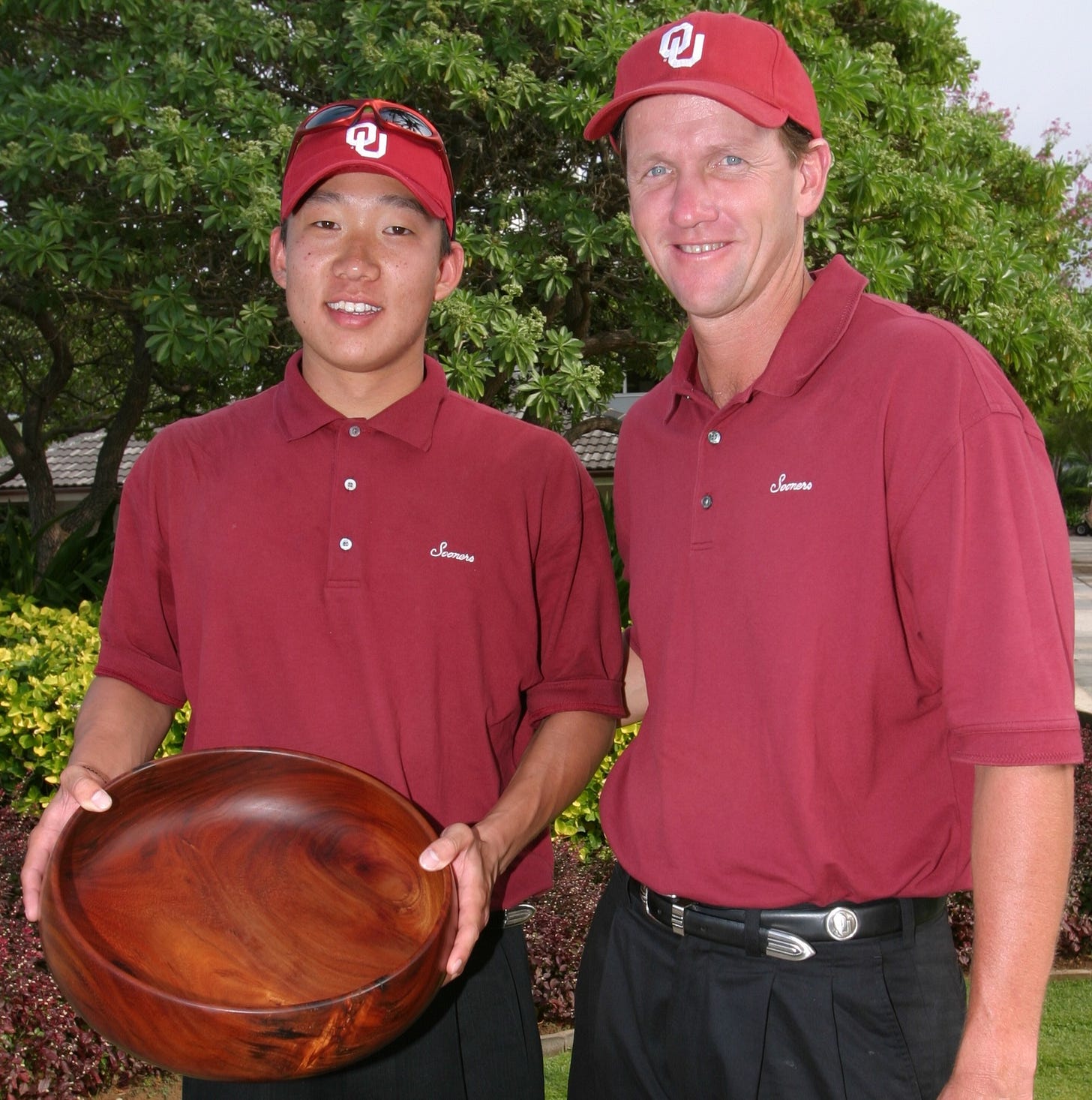
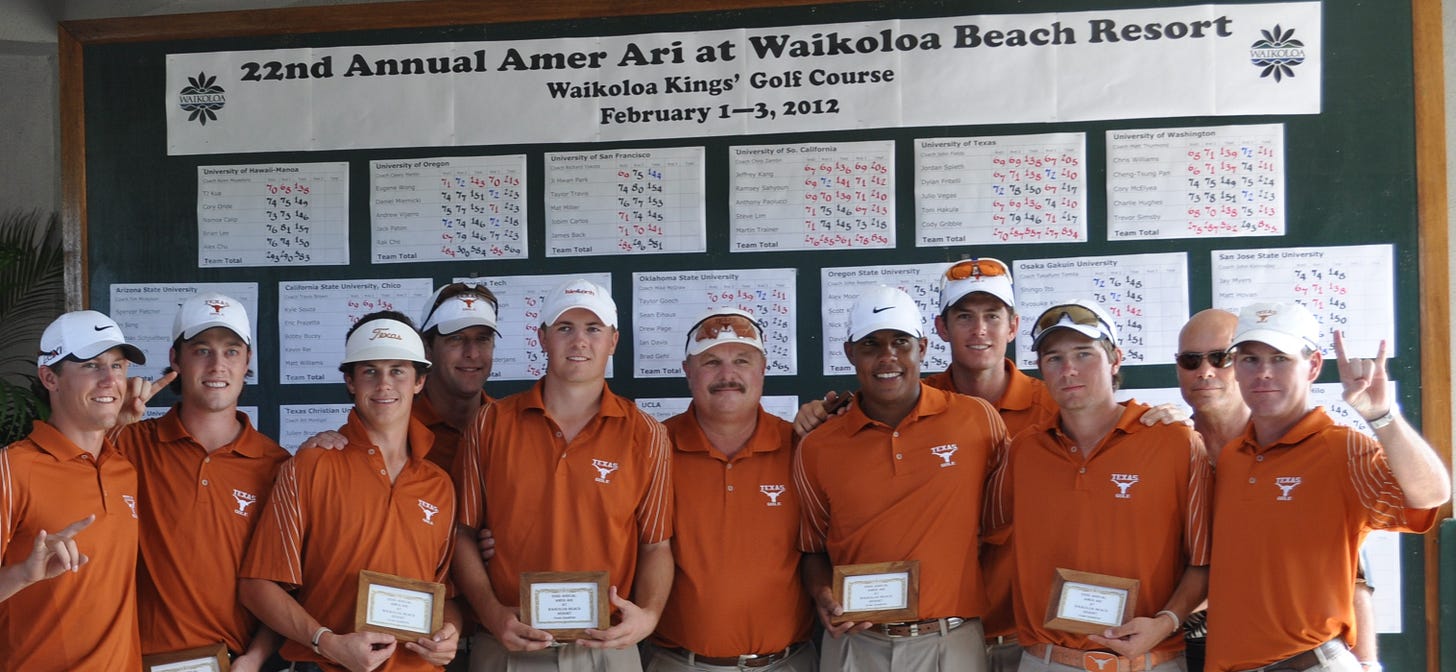

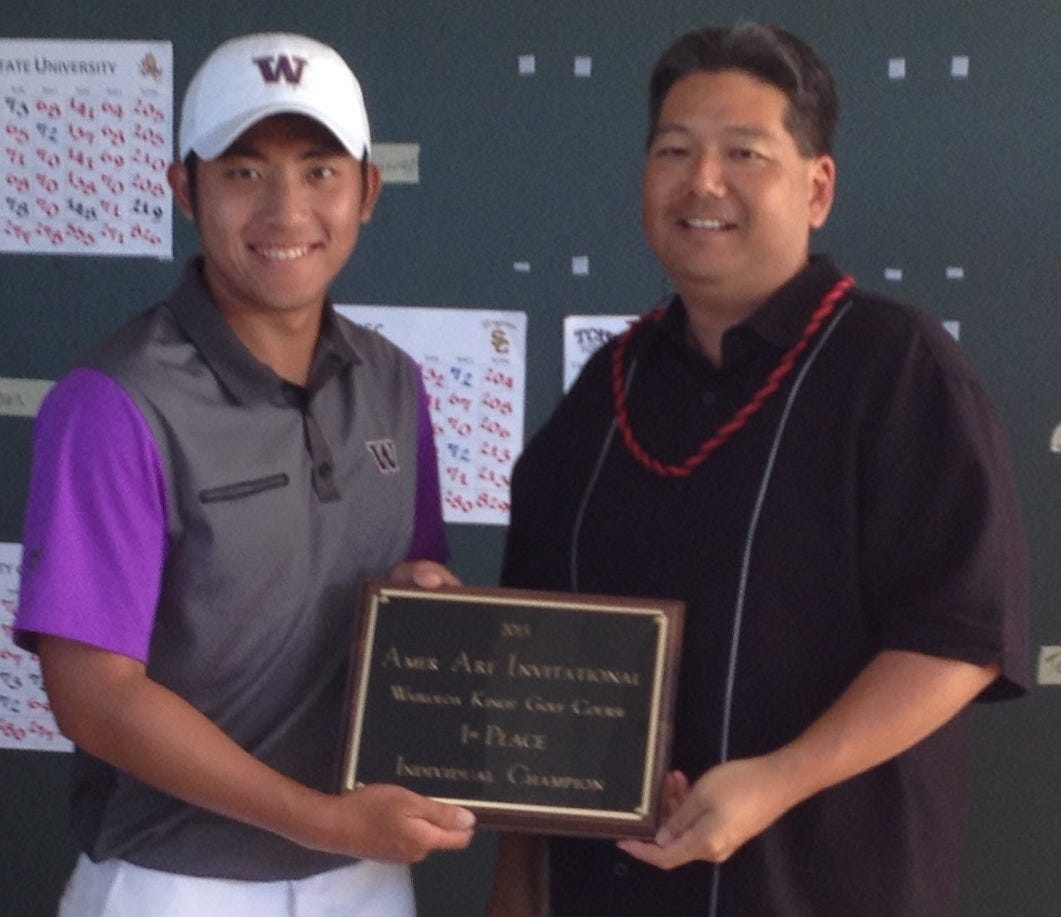
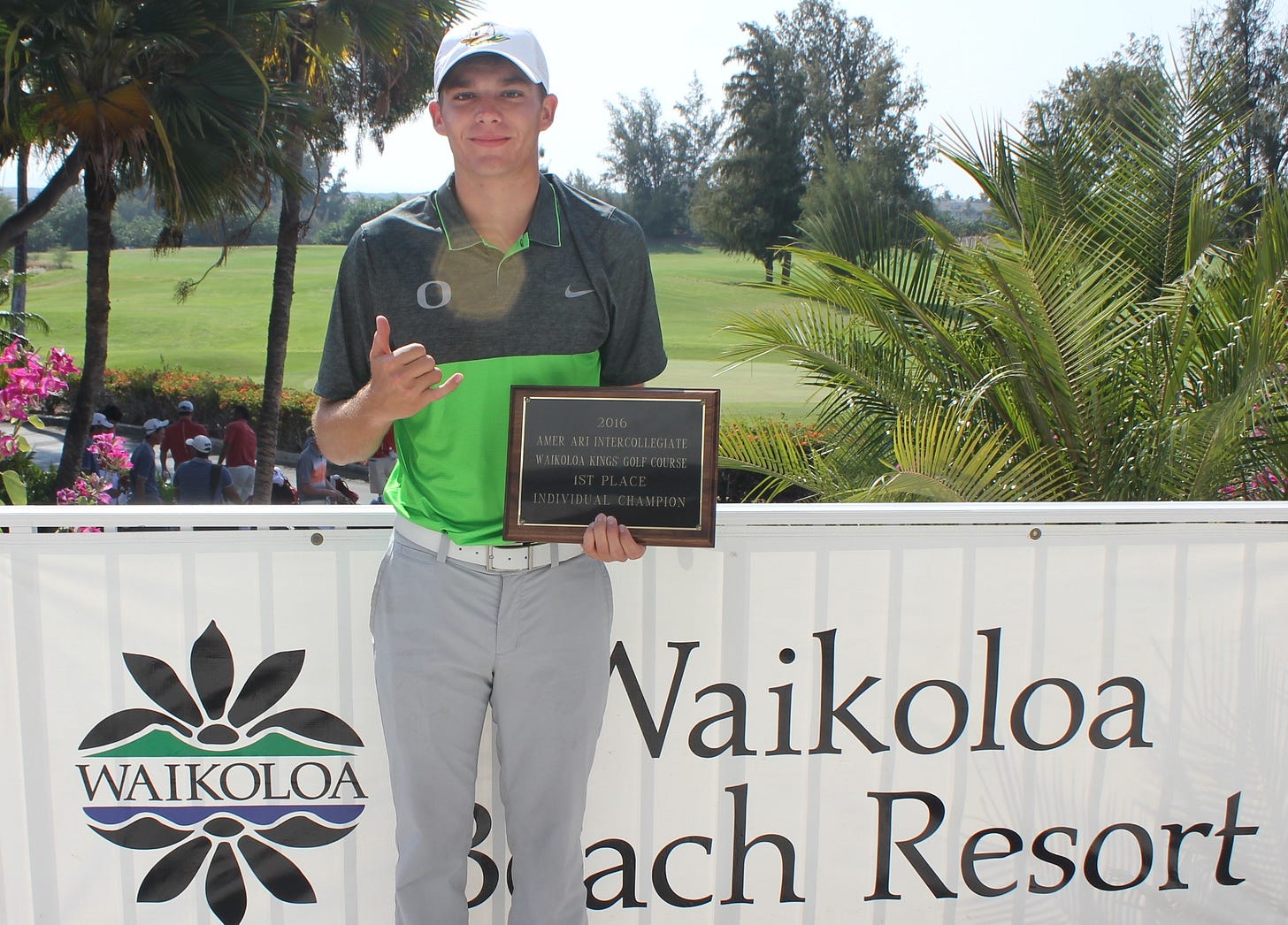
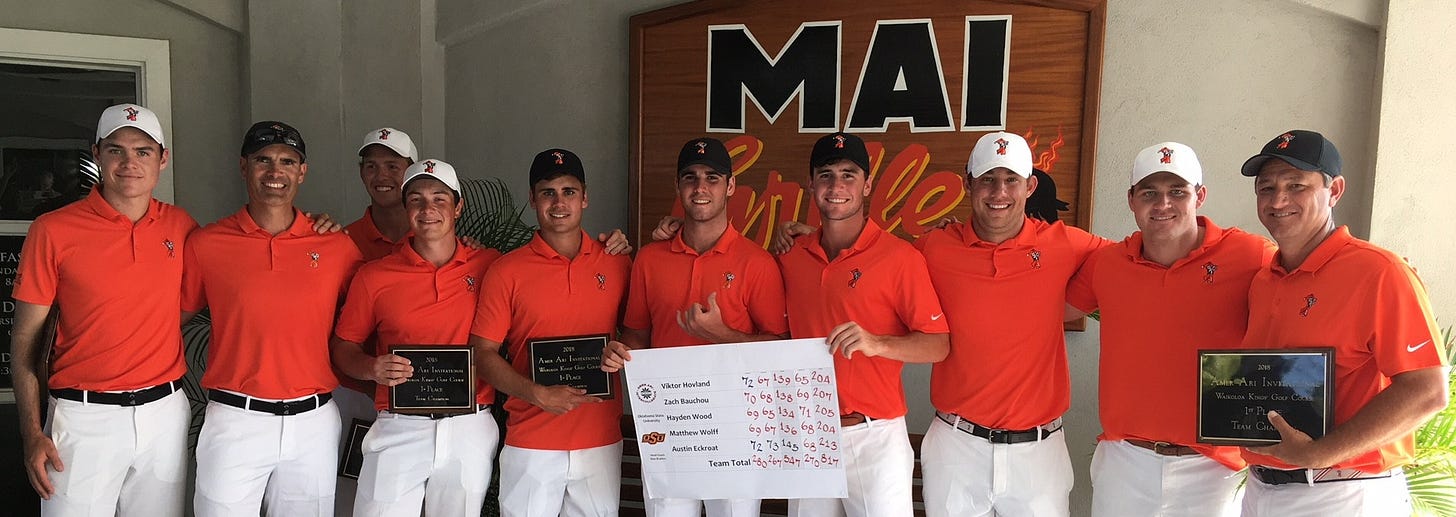
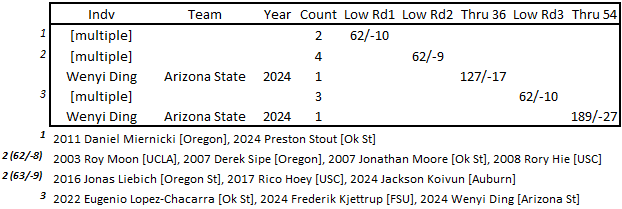



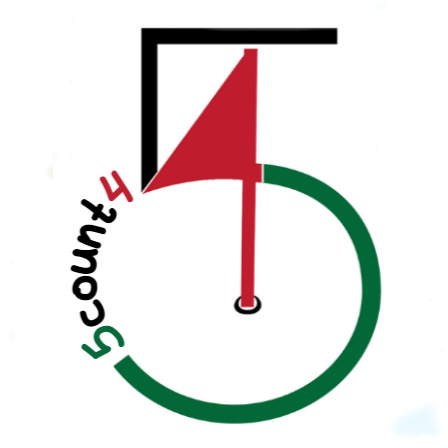
Love the spotlight on college ... just FYI -- Jack O'Keefe hasn't been at Augusta for a couple of years now ... he got out of coaching and went into banking I believe ... Steven Paine is the men's golf coach now and he's in his third season at Augusta -- Joey